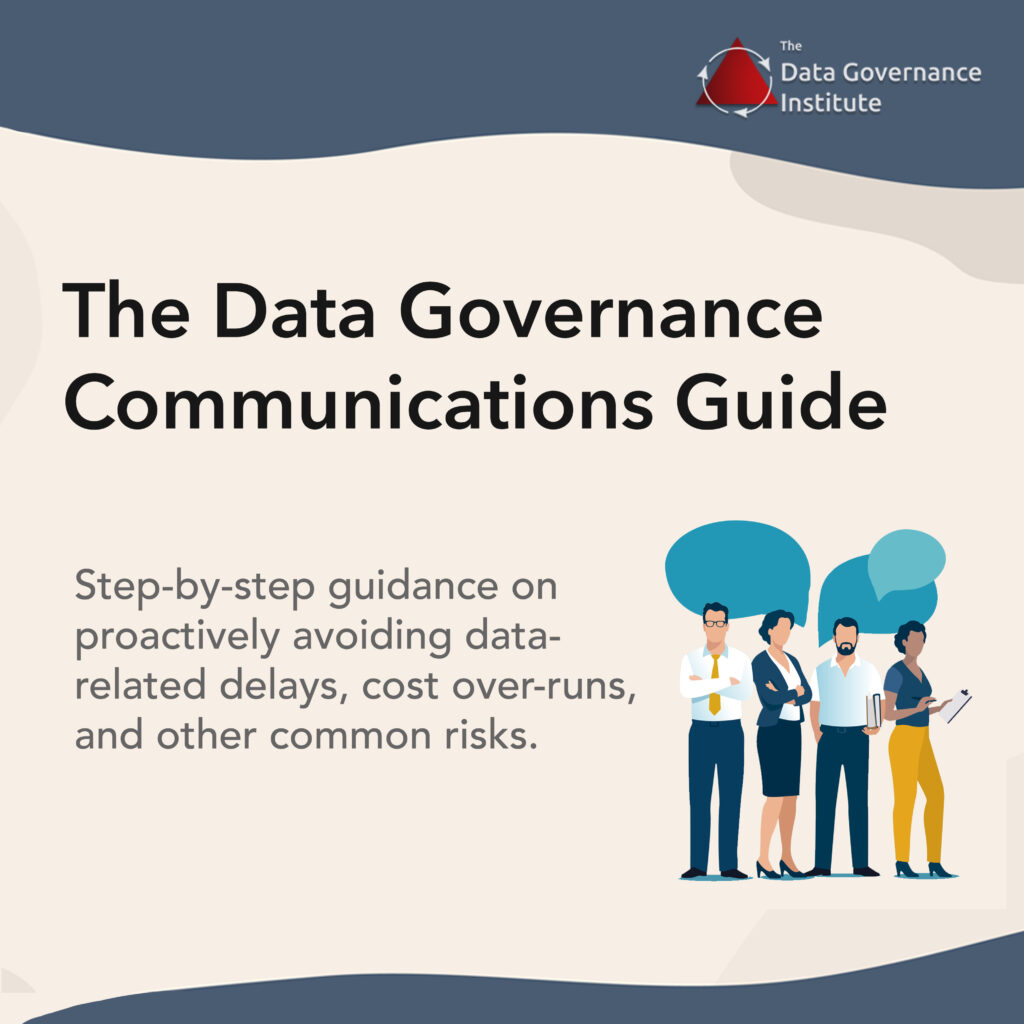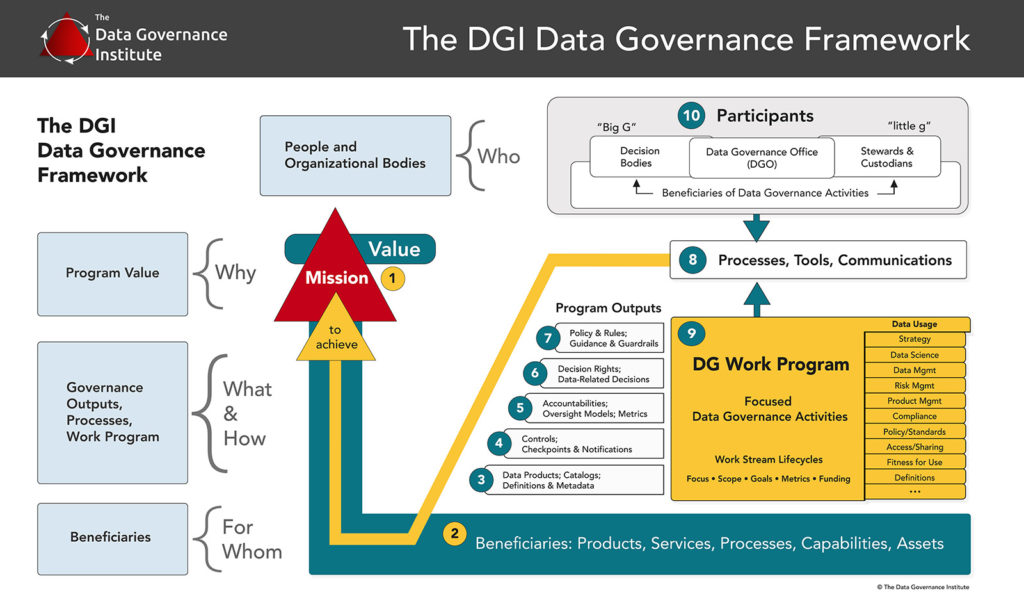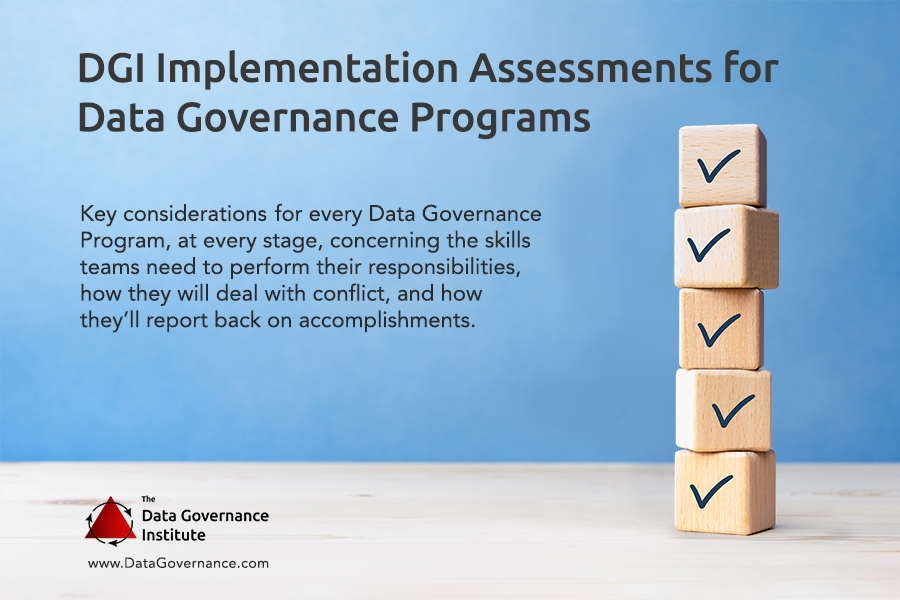Framework Component #7: Policy and Rules
Mature Data Governance programs almost always contribute to high-level, top-down, data-related policy. They are also expected to serve as translators between business teams, legal/compliance teams, and technical teams that must interpret policy and act upon it.

This translation service requires the ability to understand high-level statements about business needs and constraints, and to identify implications for products, services, processes, capabilities, and assets. It requires the ability to describe those implications using understandable language, and to identify points that require more detail, clarity, or interpretation. Often, Data Governance teams provide “Big G” Governance value to their beneficiaries by bringing such awareness of change, opportunities, or concerns, and then triggering analysis and collaboration.
Data Governance programs may also be involved in “little g” governance via the definition or review of detail-level rules designed to bring standardization or controls to data, data products, or the processes that affect them.
Many Data Governance programs publish or contribute to guidance and guardrails related to the acceptable use and sharing of data products, data classification, and security.
They may be asked to identify stewards, custodians, and others to advocate for specific types of data rules during projects, the development of System Development Life Cycles (SDLCs), or Data Development Life Cycles (DDLCs.)



